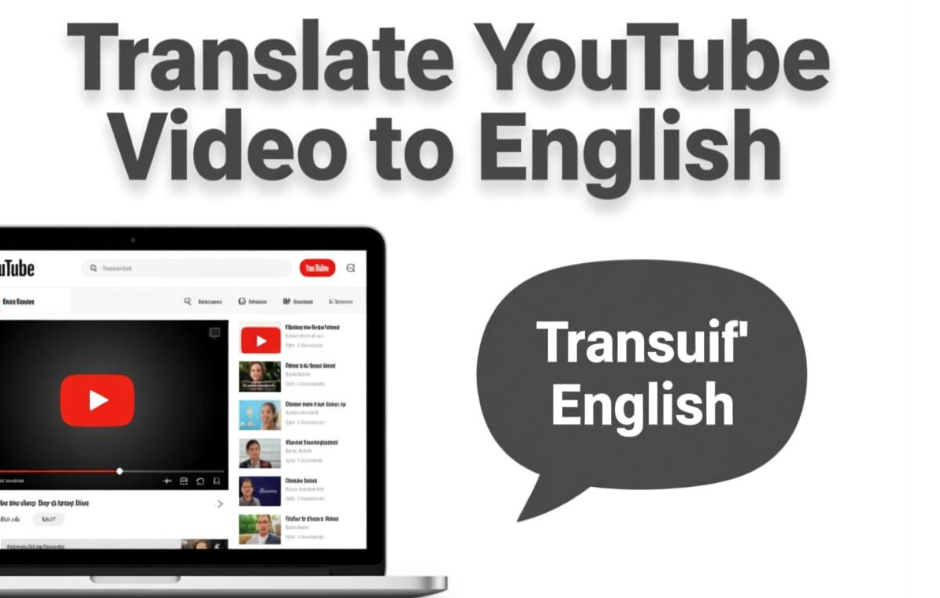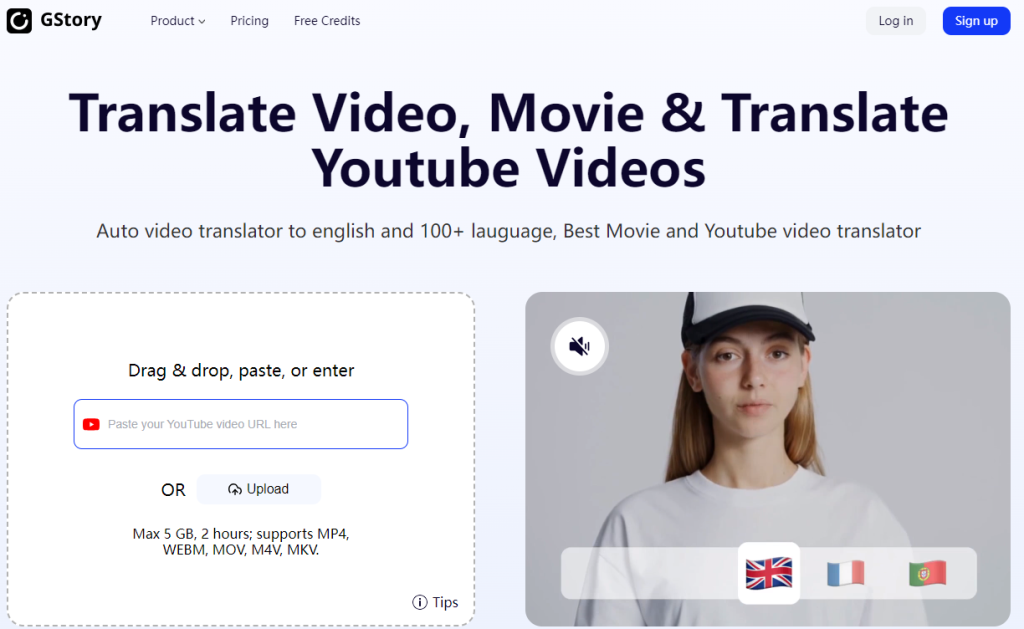Last Updated on September 26, 2025 by gaojie
In today’s world, YouTube is one of the biggest sources of knowledge, entertainment, and cultural exchange. But not every video is made in English, which makes it harder for global audiences to learn and enjoy content. Whether you want to watch educational lectures, business presentations, or entertainment from another country, being able to translate YouTube videos into English can open new doors.
This guide will explain why translation matters, how to do it step by step, which tools are available, and what challenges you may face. The goal is to help you choose the best method for your needs while keeping things simple and practical.
Why Translate YouTube Video to English?
English is one of the most widely spoken languages in the world. Many learners use it as a bridge language to access content. By translating a YouTube video to English, you:
- Gain access to tutorials, research, and lectures you couldn’t understand before.
- Connect with creators from other countries and cultures.
- Improve your own English language skills while learning something new.
- Expand your business reach if you are a content creator who wants to grow an international audience.
For students, translation can be a learning tool. For professionals, it can mean keeping up with global trends. For casual viewers, it’s simply a way to enjoy content that would otherwise stay out of reach.
How to Translate a YouTube Video to English (Step by Step)
Not every video comes with subtitles or translations, but there are still many ways to access English versions. Let’s go through the steps.
- Check for Auto-Generated Subtitles
- Many videos already have auto-generated captions in the original language. YouTube can often auto-translate these into English.
- Go to the video, click Settings > Subtitles/CC > Auto-translate > English.
- Look for Official Captions
- Some creators upload their own English captions. This is often more accurate than YouTube’s auto option.
- Use External Translation Tools
- If captions don’t exist, you can use tools that generate subtitles automatically. AI-based platforms like GStory or Kapwing can transcribe speech, translate it, and even let you edit the results.
- Manually Translate When Necessary
- For important or professional use (like business or research), you may want a human translator or professional service.
Can You Use YouTube Translate Video Options Directly?
The platform does offer built-in tools, but they have limits. YouTube translate video functions often rely on automatic speech recognition, which means heavy accents, background noise, or uncommon phrases may cause errors. For casual viewing, this is fine. But for precise understanding—like medical, legal, or technical videos—you may need advanced tools.
What If the Video Has No Captions (No CC)?
Sometimes creators disable captions, or the video doesn’t generate them automatically. In that case:
- Use an AI subtitle generator: These tools can process the audio track, create text, and then translate it into English.
- Extract audio for translation: Services let you upload audio separately for transcription and translation.
- Consider professional help: If it’s important content for business, working with a professional translator ensures higher accuracy.
The good news is that AI tools are getting better at handling “no CC” situations, saving time and money compared to traditional translation.

Tips for Getting Better Translations
- Choose videos with clear audio: Background noise or music can confuse transcription tools.
- Check the source language: If the original speech is fast or slang-heavy, expect rough translations.
- Combine human review with AI: Use AI for speed, but always proofread if accuracy matters.
- Don’t over-rely on one tool: Sometimes comparing results from two different platforms can give you better clarity.
YouTube Video Translator: Which Tool Should You Choose?
There are dozens of translation tools available, but they’re not all equal. A YouTube video translator can be:
- Built-in YouTube feature (good for casual watching, less accurate).
- AI-powered software (balanced between speed and accuracy).
- Professional human translator (best for critical accuracy, but expensive and slow).
When choosing, ask yourself:
- Do you just want to understand the gist of the video?
- Or do you need a perfect translation for business or academic work?
When to Rely on a YouTube Translator Instead of Manual Translation
Manual translation takes time and language knowledge. For everyday viewers, using a YouTube translator tool is faster and easier. It works best for casual videos, entertainment, or when you need speed over perfection. For sensitive topics, though, human review is still important.
Common Challenges and Risks
- Accuracy issues: Automatic translations sometimes miss the meaning.
- Cultural context: Words may be correct but the cultural meaning is lost.
- Technical limits: Long videos may crash free tools or require paid versions.
- Legal issues: If you plan to republish translated content, you must respect copyright.
Being aware of these problems helps you set realistic expectations.
The Future of Translate YouTube Video Technology
AI translation is improving fast. Future tools may:
- Offer real-time translation as you watch.
- Capture emotions and tone, not just words.
- Sync translations better with on-screen visuals.
As natural language processing and voice synthesis grow, the gap between human and AI translation will shrink. In a few years, you may be able to enjoy any YouTube video in English instantly, with little loss of meaning.

Conclusion
Translating a YouTube video into English isn’t just about convenience—it’s about global connection. From learning new skills to enjoying international entertainment, it breaks language barriers.
Whether you use YouTube’s built-in tools, AI-based platforms, or human translators, the method you choose depends on your goals. If you want speed and accessibility, AI tools like GStory are great choices. If accuracy is critical, nothing beats a human translator.
At the end of the day, translation helps us share knowledge and culture without borders.
FAQ
Q1: Can I translate any YouTube video into English for free?
Yes, using YouTube’s auto-translate feature. But accuracy depends on the video’s audio quality.
Q2: Are AI tools safe to use?
Most are safe, but be careful if you’re uploading sensitive or private content.
Q3: What’s the difference between AI translation and human translation?
AI is faster and cheaper, but humans understand context better.
Q4: Which is best for business use?
If accuracy matters, combine AI for speed with human proofreading.
